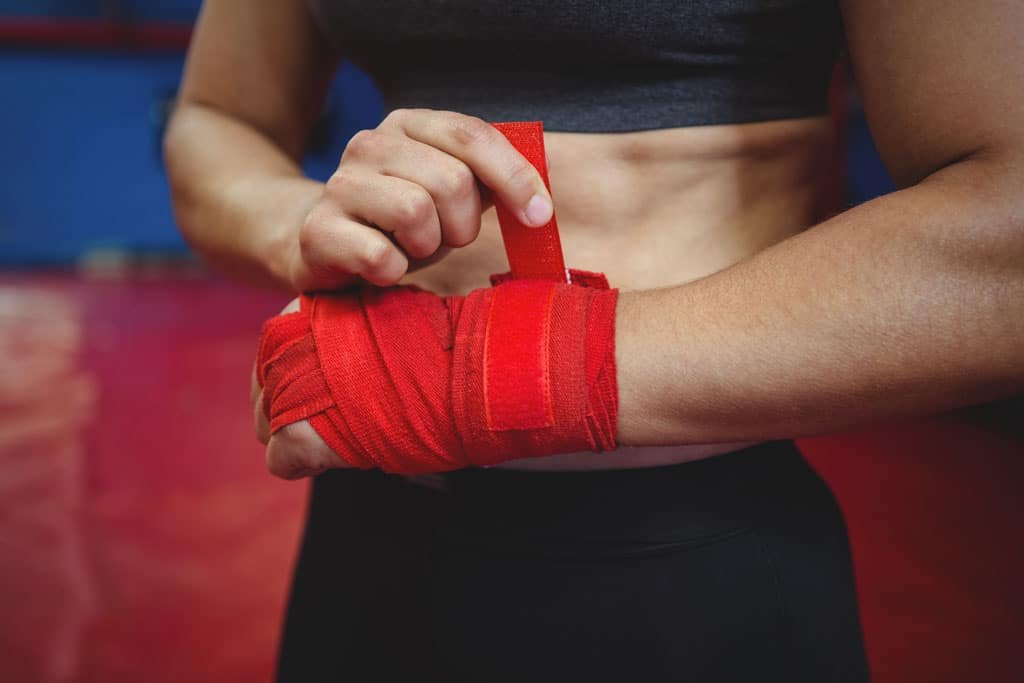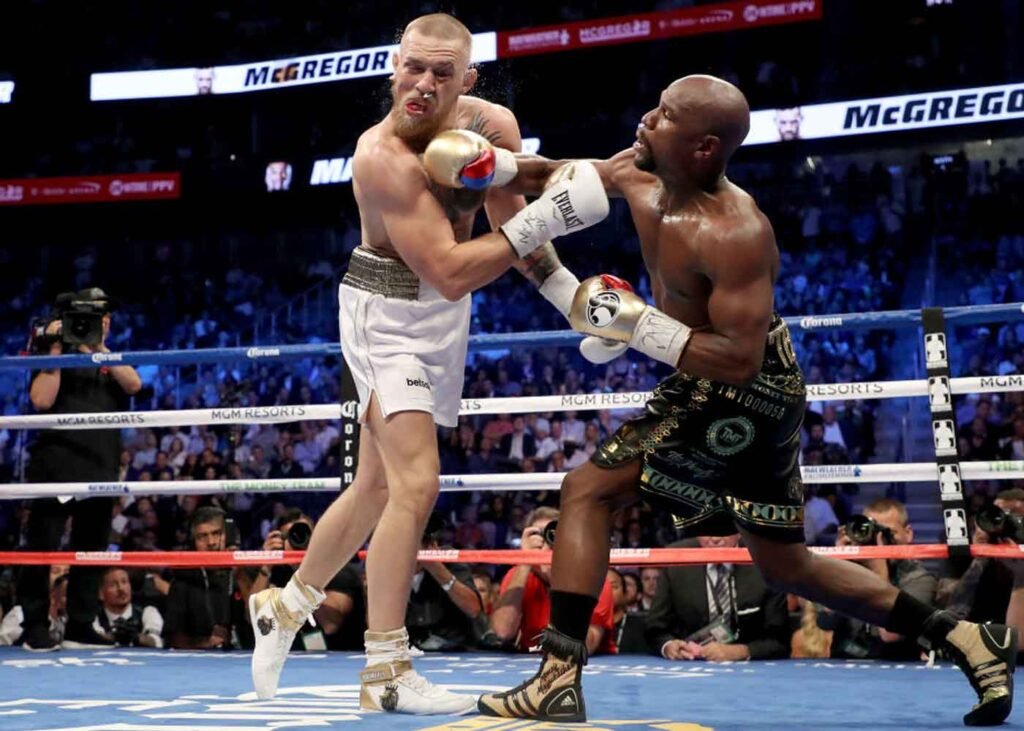Introduction: Why Hand Wrapping Is Non-Negotiable
Picture this: You’re midway through a killer bag session—sweat dripping, adrenaline pumping, punches flying… and then ouch! That sharp sting in your knuckle ruins your groove. Can you imagine how frustrating that feels? You’ve got the energy, the rhythm, the fire—and then an easily avoidable injury knocks you out of your flow.
That’s exactly why knowing how to properly wrap your hands for bag work is so important. Hand wraps aren’t just some optional gym accessory—they’re your first line of defense. They protect your knuckles, support your wrists, stabilize your thumb, and absorb all the impact that could otherwise cause sprains or worse.
In this article, we’re going to go step-by-step, cover different types of wraps, common mistakes, pro tips, and yes—how to make hand wrapping your go-to ritual before every punch session. Whether you’re into boxing, Muay Thai, or just love pounding the bag for cardio, this is the wrap guide you never knew you needed.
Let’s wrap up those hands (and minds) the right way. Ready?
Benefits of Proper Hand Wrapping
Hand Anatomy & Common Injuries
Our hands are intricate bundles of bones, joints, tendons, and ligaments. When you pound the bag without protection, you risk injuries like:
- Boxer’s fracture—fracture of 4th/5th metacarpals
- Wrist sprains or hyper-extension
- Thumb strains or sprains (especially on hooks)
Protection Offered by Wraps
Hand wraps stabilize and protect by:
- Holding knuckles firm to absorb impact
- Securing wrist alignment for preventing over‑extension
- Anchoring thumb to reduce risk of jamming
Plus, they cut down on glove odor by soaking up sweat. Your gloves stay nicer longer.
Why Hand Wrapping Matters
Alright, let’s get personal. Have you ever hit the heavy bag barehanded, thinking “It’s just a few rounds—I’ll be fine”? Yeah, we’ve all been there. The first time I did that, my wrists were sore for days. I thought my gloves would be enough, but I was wrong.
Here’s the truth:
Your Hands Are Fragile (Even If You’re Strong)
- 27 bones.
- Dozens of tendons, ligaments, and tiny joints.
- One wrong punch = weeks of recovery.
When you hit a heavy bag, your fist can absorb up to 8 times your body weight in force. That’s intense, right?
Now, hand wraps do two magical things:
- They align your joint.
- They compress and stabilize everything so nothing shifts or strains.
Think of wraps like a seat-belt for your hands—they won’t stop a crash, but they’ll reduce the damage.
Types of Hand Wraps
Hand wraps aren’t one-size-fits-all. Let’s look at your options and when each type makes sense:
Traditional Cotton Wraps
- Material: Durable cotton.
- Length: Usually 120″–180″.
- Best for: People who want full protection and customization.
Pro: Washable, breathable, great support.
Con: Can feel stiff at first; takes time to master wrapping.
Mexican-Style Elastic Wraps
- Material: Cotton + elastic blend.
- Length: 180″ usually.
- Best for: Tight fit lovers.
Pro: Form-fitting. Moves with your hand.
Con: Loses stretch after months of use.
Gel Wraps / Quick Wraps
- Material: Gel padding with fingerless glove design.
- Best for: Beginners, casual boxers, or people in a rush.
Pro: Fast to wear.
Con: Poor wrist support. Not for heavy bag work.
Gauze & Tape (Pro Fight Style)
- Material: Medical-grade gauze + tape.
- Used by: Pro fighters before competition.
Pro: Custom-fit by a coach.
Con: Single-use. Requires help to apply.
Choosing the Right Wrap Length & Material
Let’s break it down, friend.
| Wrap Length | Best For | Notes |
| 108″ | Kids, small hands, light work | Too short for full support |
| 120″ | Women, fitness boxing | Okay for quick drills |
| 180″ | Adults, full bag work | Gold standard |
Material-wise, go cotton for durability. Go Mexican-style elastic for comfort. Want convenience? Quick wraps will do the trick (but don’t expect miracles).
Key takeaway: If you’re serious about protecting your hands, go for 180” traditional wraps or Mexican-style. The extra coverage is worth it!
How to Properly Wrap Hands for Bag Work (Step-by-Step)
Let’s get hands-on, shall we? Here’s a simple guide you can follow right before training.
Start With the Thumb Loop
- Place the loop around your thumb.
- Make sure the label side is down, so you wrap away from the hand.
Tip: This ensures your wrap lays flat and doesn’t twist as you go.
Wrap the Wrist (3–4 Times)
- Go around your wrist 3–4 times.
- Not too tight—just snug for support.
This is your foundation. Keep it stable, so your punches stay strong.
Wrap the Knuckles (3–4 Times)
- Move wrap up to your knuckles.
- Spread fingers slightly to avoid cutting off circulation.
- Wrap 3–4 times for padding.
Remember: This is your shock absorber. Don’t skimp here.
Secure the Thumb
- Loop once around the thumb.
- Then wrap across back of hand toward wrist.
This anchors the thumb and prevents it from jamming when throwing hooks.
Between the Fingers (X-Wrap)
Do this 3 times, between:
- Pinky and ring
- Ring and middle
- Middle and index
Each time you loop back down to your wrist, keeping the wrap firm.
This prevents the wrap from bunching up when you close your fist. Plus, it feels secure.
Reinforce the Knuckles (Optional)
If you have leftover wrap, circle the knuckles again.
Pro boxers often double-wrap the knuckle pad if they’re training hard.
Finish at the Wrist
- End the wrap by circling your wrist a few more times.
- Velcro it down.
Test: Make a tight fist. Does it feel snug but not numb? You nailed it!
Comfort Check: Make a Fist & Adjust
- Check that your fingers move freely and you can form a fist
- No numbness or tingling—if so, rewrap looser
Common Wrapping Mistakes to Avoid
Even pros mess this up. Let’s save you the pain.
Wrapping Too Tight
Signs:
- Your fingers go numb.
- You can’t make a full fist.
Fix: Loosen the first few wraps and re-check. It should feel secure, not like a blood pressure cuff.
Wrapping Too Loose
Wrap shifts mid-round? That’s bad. You lose support, and your gloves rub your skin raw.
Fix: Practice a consistent, medium-tight wrap each time.
Ignoring the Thumb
Beginners often skip it. But one bad hook punch, and that thumb can bend painfully.
Fix: Always loop the thumb once and anchor it to the wrist.
Wrapping Over the Palm Too Much
Your glove won’t fit right. Fist will feel bulky.
Fix: Focus the wrap on wrist + knuckles. Leave the palm relatively free.
Expert Tips for Hand Wrapping
Want to feel like a champ? Take it from the pros:
From Reddit:
“Beginners don’t wrap because they don’t have wraps… You’re already hitting hard enough to hurt your hands—get wraps now.”
“Quick wraps? Horrible. Traditional wraps offer customizable, secure support.”
“Cotton wraps absorb sweat and keep gloves from smelling.”
Pro-Level Tips:
- Wash wraps after every session (they stink fast).
- Use 2 pairs: one to wash, one to train.
- Store in a breathable bag—not in gloves!
- Learn your own hand anatomy: some folks need extra wrist support, others more on knuckles.
From Experts:
Dr. Ian Gatt, GB Boxing physiotherapist, emphasizes wraps for knuckle protection, wrist stability, thumb support, and back-of-hand reinforcement.
YouTube experts (e.g., fightTIPS) demonstrate traditional Thai-style wraps with added knuckle and wrist protection.
Caring for Your Wraps
Let’s keep ‘em fresh:
- Use a mesh laundry bag (or pillowcase) to wash.
- Cold water, gentle detergent, air-dry.
- Never tumble-dry—they shrink!
Wash them after every workout. Trust me. Or they’ll smell like death.
Conclusion: Wrap Like a Warrior
Wrapping your hands properly isn’t just a technical step—it’s a mental one too. It’s that moment you shift from everyday mode into beast mode. You focus, prepare, and step up. And there’s something deeply empowering about that, don’t you think?
By now, you’ve got all the tools. Whether you’re shadowboxing, slamming that heavy bag, or prepping for a fight—you’ll be wrapped, protected, and powerful. So go ahead, strap up like a champ and make every punch count.
Stay safe. Train hard. Wrap right.
Please read more about the best boxing hand wraps.
FAQs
How long should my hand wraps be?
180 inches is ideal for adults doing bag work. Shorter ones may not offer enough support.
Can I just wear gloves without wraps?
Technically yes, but it’s risky. Wraps offer joint alignment and shock absorption that gloves alone can’t.
Are gel wraps good enough for bag work?
They’re okay for light training or cardio boxing, but not ideal for heavy bag sessions.
How often should I replace hand wraps?
Every 4–6 months with regular use. Look for signs like loss of elasticity or fraying.
Should I wrap my hands the same way for sparring?
Yes—but some boxers add more padding or use gauze/tape for high-impact sessions.



